
电气石:含义、治疗特性和功效
 如果您和我们一样热爱艺术轮廓,那么您一定会爱上碧玺石英石!碧玺石英,也称为金红石石英,是一种常见的透明石英品种,含有碧玺内含物。这些针状内含物呈黑色或深绿色,有时被称为“黑碧玺”。
如果您和我们一样热爱艺术轮廓,那么您一定会爱上碧玺石英石!碧玺石英,也称为金红石石英,是一种常见的透明石英品种,含有碧玺内含物。这些针状内含物呈黑色或深绿色,有时被称为“黑碧玺”。
作为配饰,碧玺石英首饰足够中性,可以搭配任何服装,但绝不会显得沉闷。它朴实而迷人的外观一定会吸引人们的目光,引发人们的讨论!
但是,电气石究竟意味着什么?它真的拥有神奇的力量吗?那么,电气石在日常生活中有什么好处呢?我们将在这份完整的电气石信息指南中解答所有这些问题,甚至更多。
购买电气石石英
什么是电气石石英?
电气石的名称很容易让人混淆。你可能会看到电气石石英被叫做电气石石英、电气石石英或电气石石英晶体。
每个名字都指的是同一种宝石:一种内含石英宝石,其图案会随着宝石的不同而变化。碧玺石英石的内部看起来就像一幅风景如画的景象,树枝的轮廓映衬着洁白的冬日天空。
说到冬天,电气石是冬季宝宝摩羯座的幸运石!
电气石石英石可以帮助摩羯座清除障碍,赋予他们继续前进的精神力量,从而实现他们的雄心勃勃的目标。
如果你更喜欢秋天而不是圣诞节,别担心。碧玺石英是十月的另一种诞生石!
为什么不在整个月里佩戴迷人的电气石石英手链来庆祝您的生日并炫耀您的万圣节精神呢?
现在是时候深入研究电气石如此迷人的所有科学细节了。
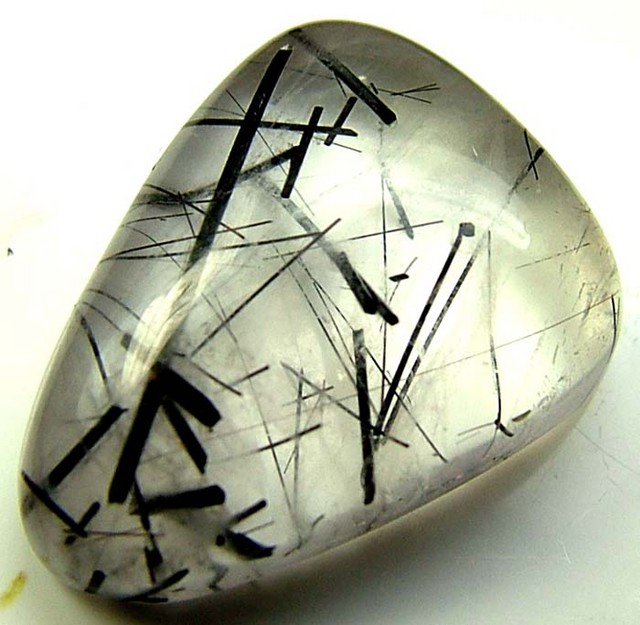 电气石石英石规格
电气石石英石规格
电气石石英是一种含有细长电气石内含物的石英晶体。电气石是指结构相同但化学成分略有不同的硼硅酸盐矿物的总称。
碧玺是一种多面宝石,主要有三种形态:黑碧玺、镁电气石和锂电气石。黑碧玺,又称黑色碧玺,是在电气石石英中发现的。
然而,碧玺内含物并不仅限于透明石英。其他可能含有碧玺的石英种类包括黄水晶和烟水晶。
对于电气石石英的其他特征,以下是完整列表:
化合物:二氧化硅(石英)和硅酸硼(电气石内含物)
莫氏硬度:7
颜色:无色;黑色或深绿色内含物
晶体结构:三方晶系
光泽:玻璃光泽(类似玻璃)
透明度:半透明至透明
折射率:1.54-1.55
密度:2.64-2.69
解理:无
电气石石英只是众多内含物石英石中的一种。其他例子包括金红石石英、绿帘石、 云母石英和黄铁矿石英。每种不同的内含物都会赋予宝石独特的灵性。
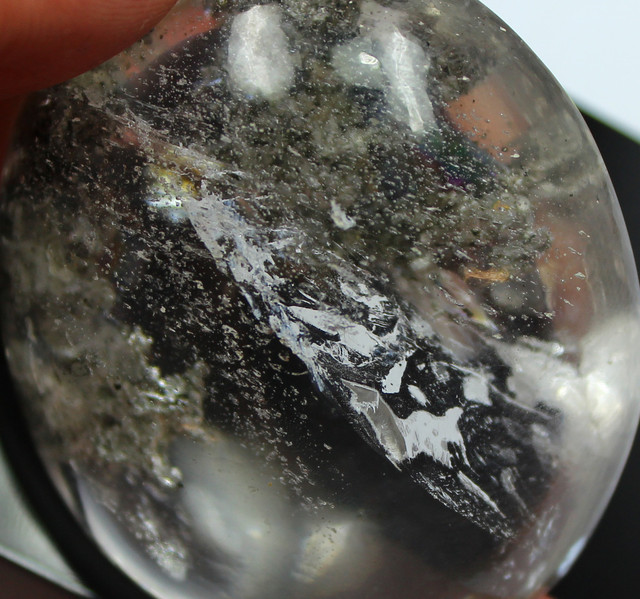
电气石石英的含义
“碧玺”一词源于僧伽罗语“tōramalli”,意为“混合宝石”。“tōramalli”是斯里兰卡人对任何彩色宝石的称呼。
直到 1766 年瑞典矿物学家斯文·林曼 (Sven Rinmann) 正式鉴定出这种矿物后,“电气石”才被用作特定矿物的名称。
学者们尚不确定“石英”一词的来源,但最有可能的词源是“ querklufterz”。“Querklufterz”源于中世纪一种名为古撒克逊语的语言,意为“横纹矿石”。
水晶象征着丰饶与纯洁。它常被视为光柱,有时也象征着太阳本身及其赋予的生命力。
现在,碧玺的意义与根基和正念息息相关。这同样适用于碧玺石英的意义。正念是一种具有变革性的整体疗法,它实际上可以改善你的大脑化学反应!此外,沉浸于碧玺石英迷人的图案之中,也是放松身心的绝佳方式。
在风水学中,碧玺可以净化空间。透明石英在风水中的益处包括协调和增强能量。任何宝石都具有同样的功效,因此透明石英可以增强碧玺的净化功效,打造完美的禅意空间。
此外,碧玺被认为是幸运石,那么用透明石英石来增强这种幸运感呢?碧玺石英石就是一个完美的幸运符!
如果你知道如何使用电气石,它象征的意义就在于它带来的诸多益处。那么,该如何利用电气石呢?
电气石的精神和治疗特性
碧玺石英是一种疗愈石,具有接地、守护和平衡的功效。这些特性交织在一起,让您保持当下,同时保护您免受周围负面情绪的侵扰。
在身体疗愈方面,电气石可以帮助缓解胃灼热或肠胃感冒等消化问题。此外,据说电气石还能帮助恢复神经系统并促进伤口愈合。
你是否容易吸收他人的情绪?碧玺可以帮助你平衡与生俱来的同理心。通过吸收负能量,碧玺可以帮助你减轻压力。碧玺的接地特性对有同理心的人来说是绝佳的工具,而他们在日常生活中练习正念,则可以进一步受益。
正念与冥想往往相辅相成。灵性冥想的最佳方法之一?脉轮疗愈!
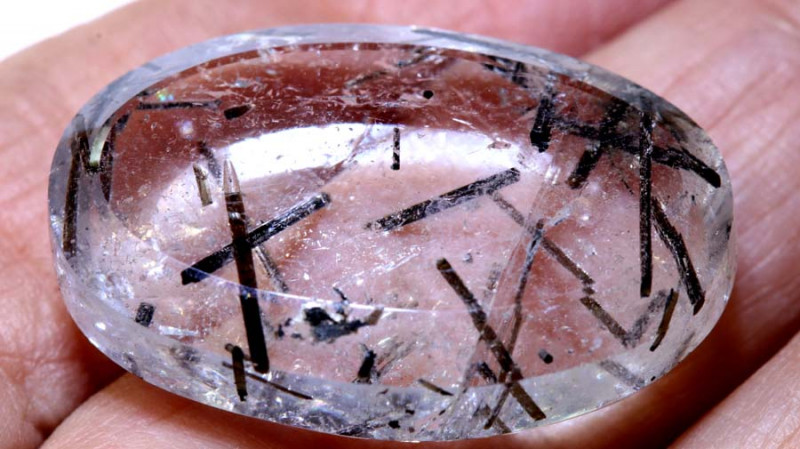
电气石石英与哪个脉轮相关?
电气石石英石与两个脉轮对齐:基础脉轮和第三眼脉轮。
海底轮,又称根轮,掌管着我们的基本需求以及与地球的联系。海底轮将个体与世界连接起来,因此对显化和根基至关重要。
如何知道这个脉轮是否被阻塞?你可能会感到失落、焦虑或疲惫。碧玺可以平衡脉轮,让你相信直觉,拥抱真实的自我。
第三眼脉轮,或眉心轮,位于前额的中央,掌管我们的直觉和意识。
如果你不熟悉第三眼脉轮,它就是提升自我意识、鼓励我们遵循本能的能量中心。当它被阻塞时,我们可能会产生自我怀疑或自我破坏的情绪。当碧玺打开脉轮时,我们的不安全感会被对新体验的开放态度和自我反省所取代。
对于更注重灵性的人来说,这个脉轮可以帮助你获得通灵能力,并与你的精神导师沟通。电气石可以平衡第三眼脉轮,让你能够进行星体旅行,并追溯前世。
说到回顾过去,让我们来看看电气石石英的历史吧!
电气石石英石的历史
虽然尚不清楚电气石石英何时首次被发现,但电气石和石英各自都有着令人着迷的历史。
石英的历史源远流长,甚至可以追溯到200万年前。考古学家发现证据表明,非洲早期人类,或者说原始人类,曾使用石英来制造锋利的工具。随着人类的进化,我们使用石英的方法也随之演变。
土著群体使用石英来生火、雕刻岩石,并佩戴石英作为护身符以求好运或占卜。
古希腊人,尤其是泰奥弗拉斯托斯和老普林尼,认为石英晶体是冰的特殊形态。他们使用了“水晶”这个词——石英直到1505年才被使用——但现代学者认为他们指的是石英。
电气石的时间线是什么时候开始的?
距今不到两百万年,碧玺于1500年代后期出现。当时,一位名叫弗朗西斯科·斯宾诺莎的西班牙征服者在巴西发现了一块碧玺。然而,由于这块宝石并不为人所知,斯宾诺莎最初以为是祖母绿。
18世纪,荷兰宝石商人在斯里兰卡发现了碧玺,并将其当作祖母绿出售,犯了同样的错误。然而,荷兰人却意外发现了碧玺最令人着迷的特性之一:热释电特性。
荷兰人加热石头后,它能通过磁力吸引烟斗里的烟灰。冷却后,石头又能排斥烟灰。真是既时尚又实用!
在西部,美洲原住民使用碧玺已有悠久历史,尤其是在守护仪式和墓葬中。然而,直到1883年蒂芙尼宝石学家乔治·F·昆兹(George F. Kunz)撰写了关于碧玺的文章后,碧玺才在美国声名鹊起。
虽然美国人喜爱这种新兴的碧玺宝石,但我们的大部分碧玺宝石却销往了中国。慈禧太后非常喜爱加州出产的粉色碧玺,因此她下令进口这些宝石,用于制作鼻烟壶雕刻品和珠宝镶嵌。
谈到矿山,我们来讨论一下电气石石英石来自哪里。

电气石石英的起源和来源
电气石的形成与大多数石英石相似。在地下高温高压的环境下,石英矿物会熔化成液态。附近的其他矿物也会熔化——在本例中,电气石就是其中之一。
液态矿物在此混合。随着压力和温度的降低,石头逐渐硬化,形成了我们在碧玺石英石中看到的美丽内含物图案。
碧玺的形成过程发生在地下深处,之后才被开采并打磨成华丽的宝石。那么,世界上哪里可以找到碧玺石英呢?
采矿地点
珠宝中使用的大部分电气石石英产自巴西。埃塞俄比亚、印度和坦桑尼亚也拥有丰富的电气石石英矿藏。
其他发现电气石石英的国家包括:
斯里兰卡
马达加斯加
阿根廷
加拿大
南澳大利亚州
美国(主要在加利福尼亚州和内华达州)
无论碧玺石英石产自哪里,您在购买之前都需要了解一些基本的选购要点。我们帮您搞定!
电气石石英宝石特性
无论何时购买商品,尤其是网购宝石,做好调查研究都至关重要。毕竟,知识渊博的购物者才是精明的购物者。购买宝石时,了解决定其价值的关键特征至关重要。让我们一起来看看。
颜色
虽然电气石的色彩范围是所有宝石中最广泛的,但电气石石英石通常只呈现几种深色调。
对于最常见的碧玺石英基底——透明石英,碧玺内含物大多呈黑色或深绿色。如果石英石是彩色的,例如黄水晶或烟晶,碧玺内含物可能呈现黑色、浅绿色、深橙色,甚至紫色。
明晰
通常,含有内含物的宝石价值低于不含内含物的宝石。然而,碧玺石英石因其内含物而备受推崇,因此内含物图案越有趣,价值也就越高。
根据彩色宝石分级标准,电气石石英属于 III 型净度等级。
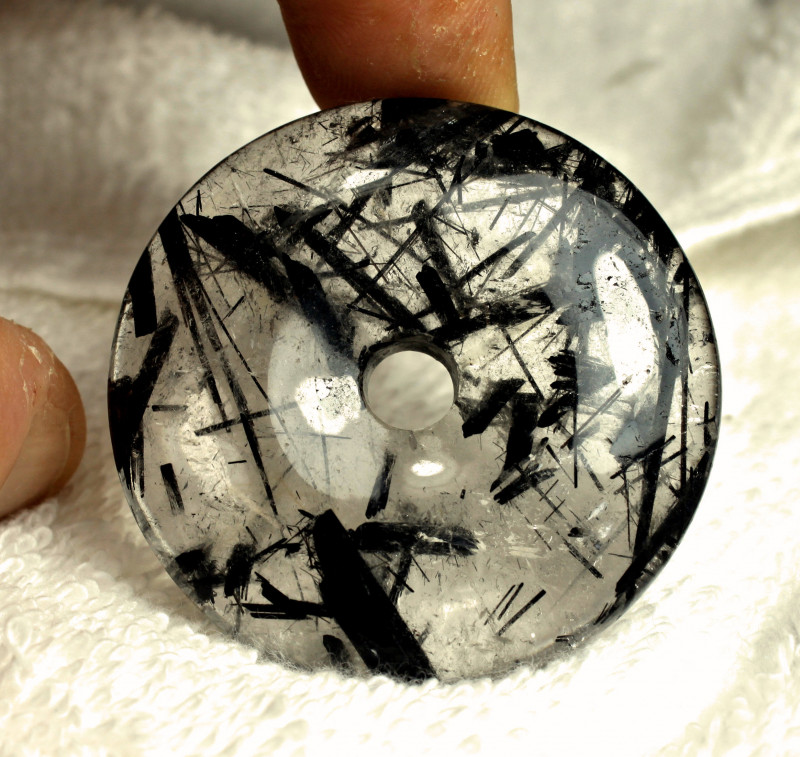
切
碧玺石英的强度使其适合任何常见的宝石切工。碧玺石英的常用刻面切工包括椭圆形、圆形和玫瑰形。然而,它更常被制成珠子或凸圆形宝石,因为这种切工最能展现其复杂的内含物。
雕刻是另一种展示碧玺石英石的流行方式。动物雕像、凹雕或水晶点等装饰元素,都能将碧玺石英石的美感和保护性融入任何空间。
碧玺石英用途广泛,无论男女,都是配饰的理想之选。何不送给你的伴侣一条守护的碧玺石英项链?这能让他们感受到,即使你远在天涯,你也始终在他们身边,给予他们安全感。
你肯定也想好好保护你的碧玺石英石吧?接下来,我们会告诉你如何做到这一点。
电气石石英石的保养和维护
碧玺石英足够坚韧,可以承受大多数清洁方法。它甚至可以承受超声波清洗器。不过,为了安全起见,我们建议还是使用温水和肥皂。
为了防止外观发生变化,请务必将电气石石英石存放在远离阳光直射和刺激性化学物质的地方。
如果您想知道如何清洁电气石石英,以下是我们的最佳建议:
将石头埋入健康植物的土壤中,静置2-3小时。
使用鼠尾草棒的烟雾来熏香水晶。
将水晶放在月光下过夜,进行月光浴以净化水晶。
想知道碧玺石英的价格吗?继续阅读,寻找答案。
电气石石英的价格和价值
电气石石英是一种丰富且价格实惠的宝石,那么它们的价格是多少呢?
刻面切割的碧玺石英石价格在每克拉3至9美元之间。有些零售商可能会收取更高的价格——每克拉10至160美元不等。
凸圆形宝石和珠子的价格甚至比刻面宝石更优惠。大多数碧玺石英凸圆形宝石的价格为每克拉0.20至0.50美元。
如果您是宝石收藏家,您可能正在寻找原石。碧玺石英原石的价格与凸圆形宝石或珠子差不多,每克拉0.20美元到0.75美元。
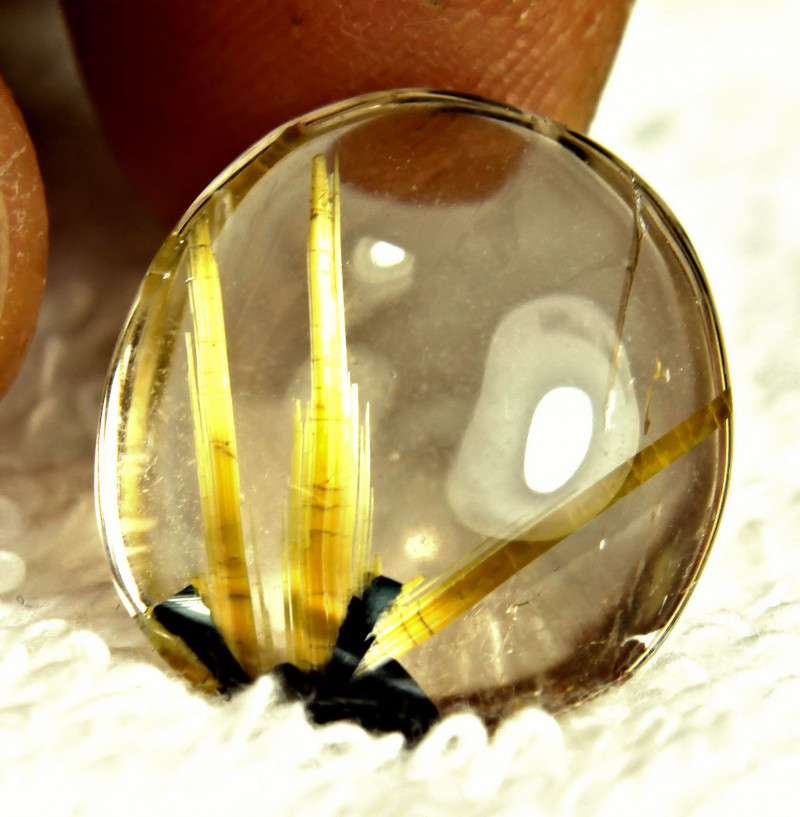
想要购买电气石石英石吗?
现在你已经了解了所有关于碧玺石英石的知识!这颗宝石融合了石英和碧玺的力量和特性。它独一无二,非常适合用于接地气和正念练习。
你的生活中需要更多保护或平衡吗?不妨自我反省一下?电气石可以满足你的需求。
引用著名心理学家亚伯拉罕·马斯洛的话:“要改变一个人,就必须改变他对自己的认识。”
搜索Gemstone Encyclopedia
最新的文章
彩虹格纹日光石是一种长石,由于内部含有各种包裹体,呈现出三种绚丽的光学效应。它绚丽多彩的光泽和格纹图案使其成为收藏家梦寐以求的珍宝!
12th Jan 2026
文章分类
How To's is where you will find helpful articles from gem Rock Auctions on how to cut gemstones, select gemstones and buy gemstones.
9文章数

